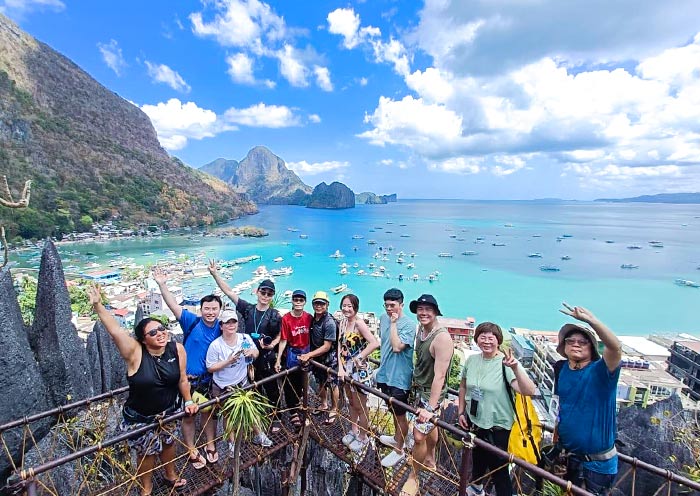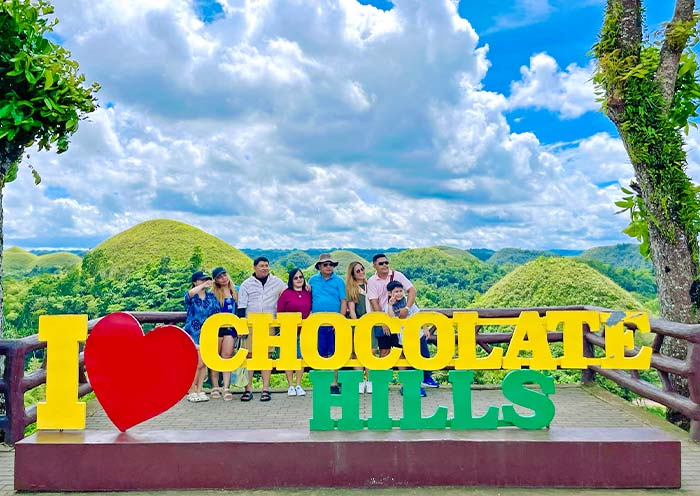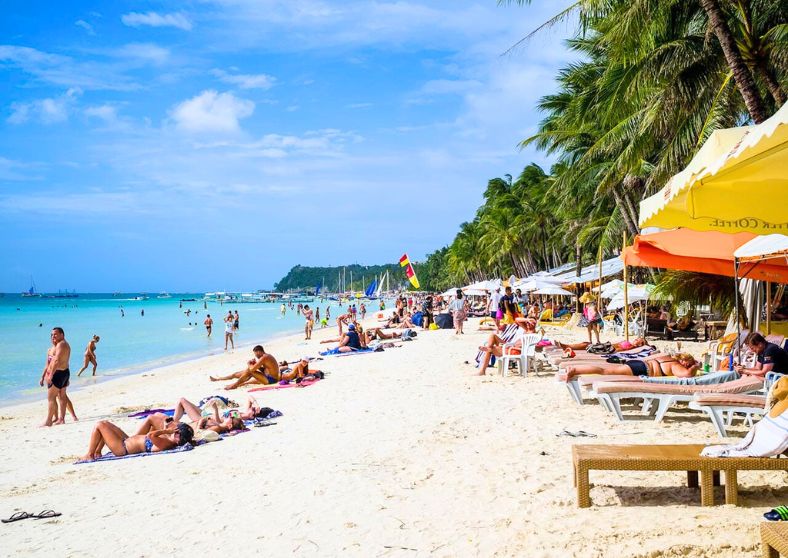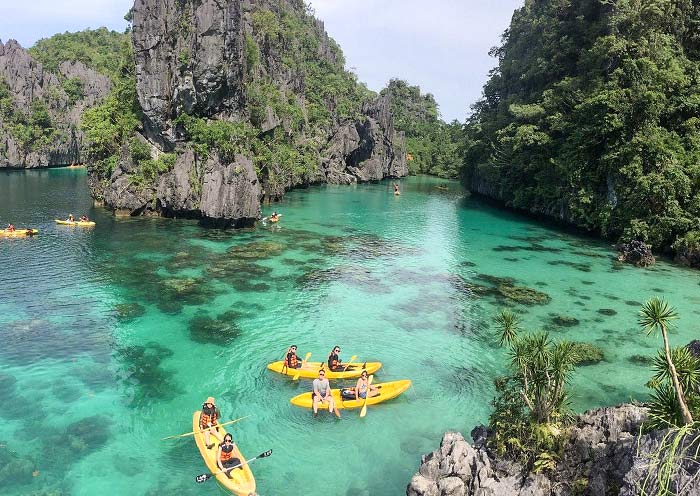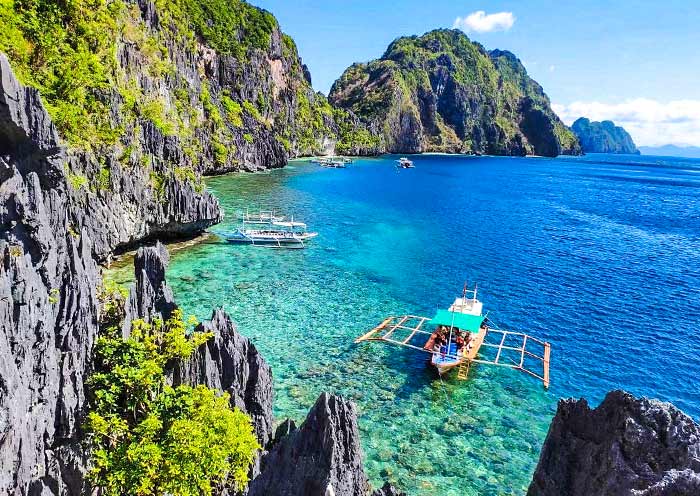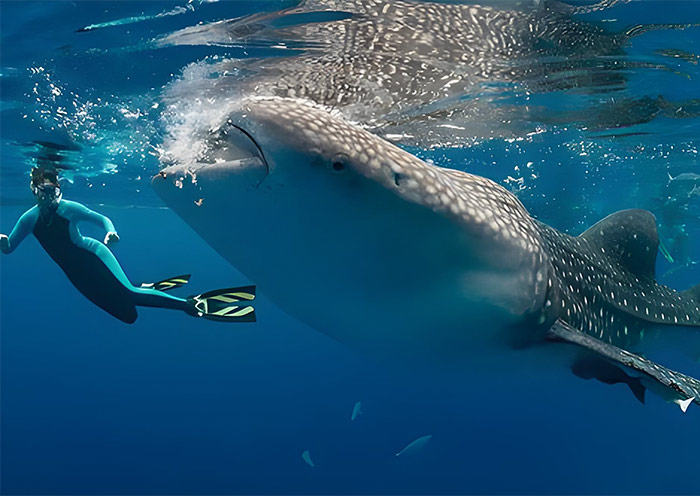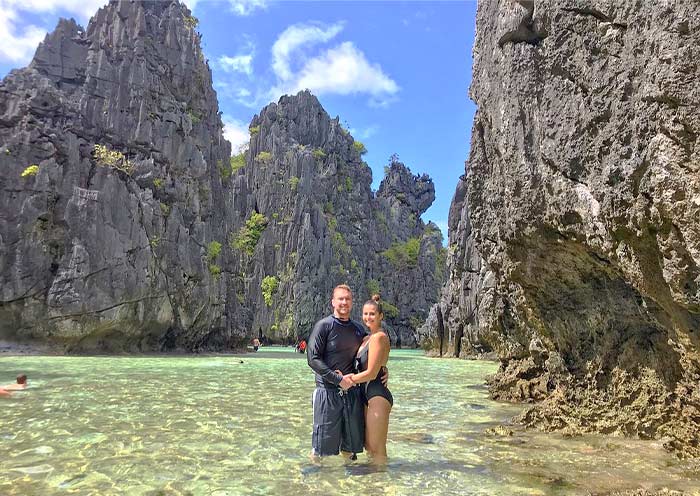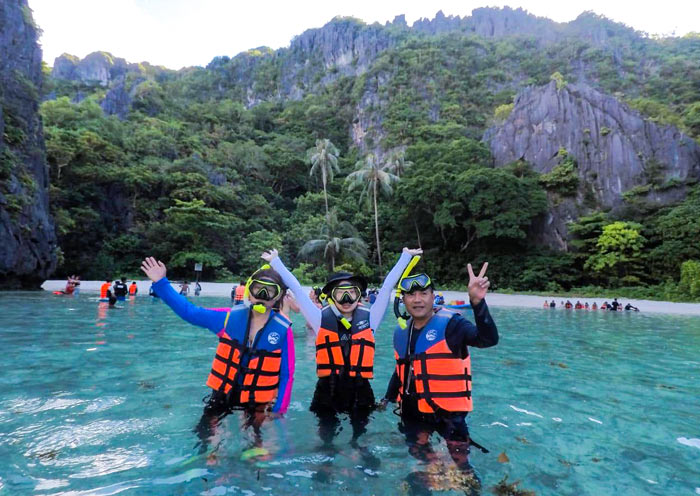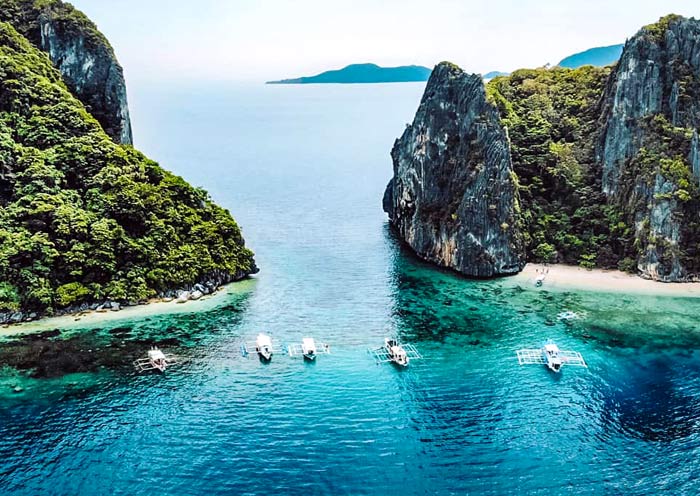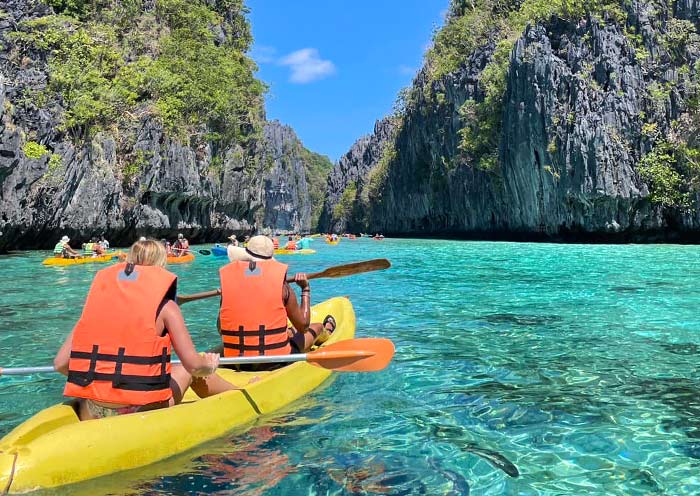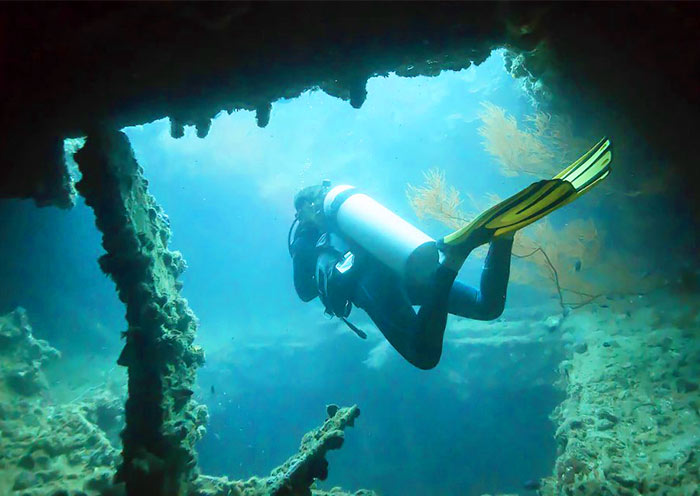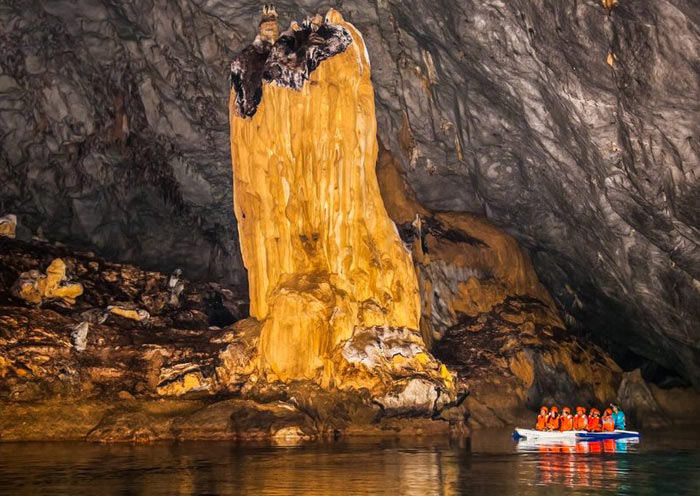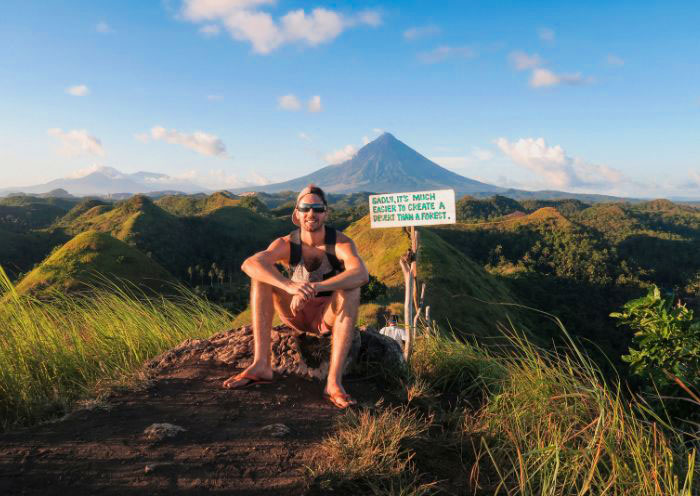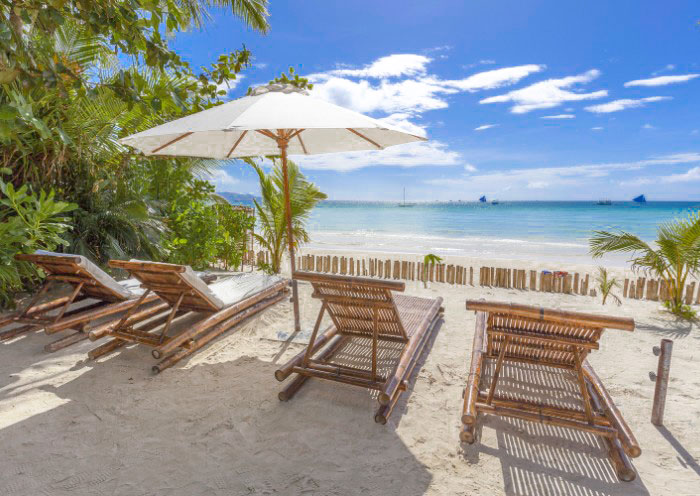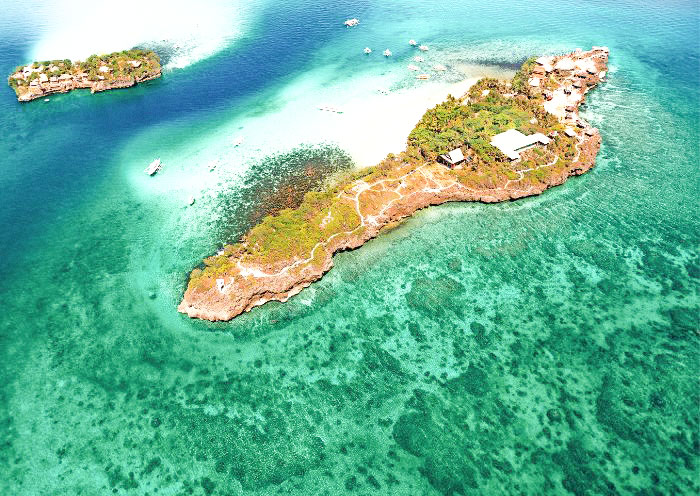
Philippines Tours | 50+ Philippines Trips 2025

Imagine stepping onto powder-soft white sand, diving into crystal-clear turquoise waters, and exploring hidden lagoons surrounded by towering limestone cliffs. The Philippines, an archipelago of over 7,000 islands, is a tropical paradise waiting to be discovered.
Our Philippines Tours offer the best way to explore these breathtaking islands. We offer a wide range of (50+) options including small group tours, private tours, day trips, and multi-day tours to suit your travel length and budget. Whether you're craving island hopping, adrenaline-packed adventures, or family-friendly activities, romantic honeymoons, we’ve crafted the perfect tours to make your dream getaway a reality!
![]() Explore Best of the Philippines with Our Philippines Tours
Explore Best of the Philippines with Our Philippines Tours
- Palawan Island Hopping - Discover El Nido, Coron, home to turquoise waters, hidden lagoons, and towering limestone cliffs and Puerto Princesa's underground river.
- Bohol & Panglao Island - Marvel at the Chocolate Hills, cruise the Loboc River, and meet the tiny tarsiers, spot playful dolphins on a sunrise boat tour.
- Boracay Getaway - Relax on the legendary White Beach, known for its powder-fine sand and vibrant nightlife. Enjoy thrilling water activities or unwind on a sunset cruise.
- Cebu & Moalboal Escape - Discover Spanish-era landmarks. Swim with whale sharks in Oslob, chase waterfalls at Kawasan Falls, and snorkel with sardine runs in Moalboal.
- Dumaguete & Siquijor Island - Discover Dumaguete's charming coastal vibe and experience Siquijor's mystical traditions and stunning waterfalls.
- Manila & Vigan Heritage Tour - Walk through colonial-era streets, explore Intramuros' historical landmarks, and taste authentic Filipino cuisine.
Registered Local Company Name: ASIA ODYSSEY TRAVEL PHILIPPINES INC.
Manila Office: Parqal Mall Unit 309, 3rd Floor, Building 9, Pres. Diosdado Macapagal Blvd., Aseana City, Parañaque City
Contact Us: Philippines@asiaodysseytravel.com
Small Group Philippines Tours with Prices
Private Philippines Tours 2025/2026
Explore Philippines Tours by Destination
Pick Philippines Tours by Travel Style
Useful Travel Articles for Philippines Tours

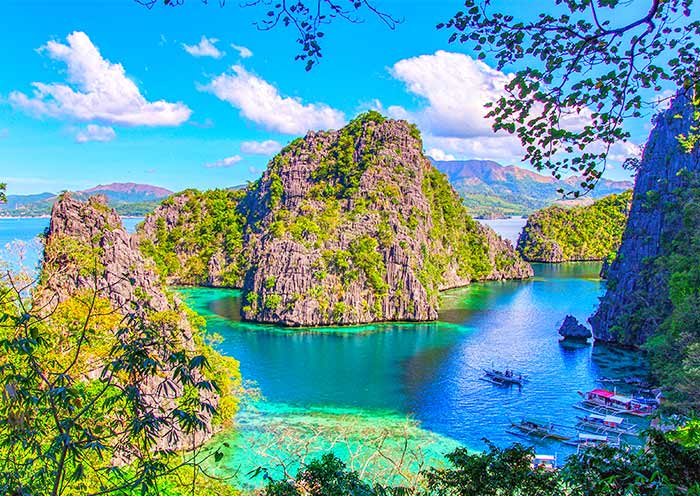

Latest Philippines Tours Reviews from Our Customers

P Vincent
Date of Experience: Jan 12, 2025
Tour Customized by: Vincent
You May be Interested in This Tour: Customized Tour

Asia Selke
US
Asia Odyssey Travel has acquired Philippines Discovery Tours (which was the group that supported our trip)! The entire process was AMAZING!! We went on a 14 day (4 island) trip, so a lot of coordinating! Leo from Asia Odyssey helped me with the initial reservations. As the vacation approached, Leo created group chats on WhatsApp with each Island Tour Coordinator who was my point person for each island. They were AMAZING!!!!!! Communication was superb! Honestly, I can't wait to book another trip with this company! I was traveling with my young daughter so it was really important to have good coordination & communication so I could enjoy this trip! Truly an incredible experience!!!!
Destination(s): Other
Date of Experience: Mar 26, 2025
Tour Customized by: Leo
You May be Interested in This Tour: 12 Days Ultimate Palawan Group Tour: Puerto Princesa, Port Barton, El Nido, Coron

Tess Domby
United States
Hands down to Kayla our tour coordinator she did a great job coordinating our flights from island to island and to Manila. Our hotel was good along with great food. El Nido is my favorite, then Bohol then Boracay.
Thank you Kayla.
Tess from USA
Date of Experience: Jan 16, 2025
Tour Customized by: Kayla
You May be Interested in This Tour: Customized Tour
- United States (+1)
- Australia (+61)
- Singapore (+65)
- Malaysia (+60)
- Philippines (+63)
- Canada (+1)
- Italy (+39)
- Indonesia (+62)
- United Kingdom (+44)
- Spain (+34)
- Mexico (+52)
- Hong Kong (+852)
- Thailand (+66)
- United Arab Emirates (+971)
- New Zealand (+64)
- South Africa (+27)
- Germany (+49)
- Brazil (+55)
- India (+91)
- France (+33)
- Vietnam (+84)
- The Netherlands (+31)
- Saudi Arabia (+966)
- Ireland (+353)
- Argentina (+54)
- Switzerland (+41)
- Romania (+40)
- Pakistan (+92)
- Japan (+81)
- Portugal (+351)
- Bangladesh (+880)
- South Korea (+82)
- Puerto Rico (+1)
- Türkiye (+90)
- China (+86)
- Belgium (+32)
- Qatar (+974)
- Greece (+30)
- Taiwan (+886)
- Austria (+43)
- Poland (+48)
- Israel (+972)
- Chile (+56)
- Sri Lanka (+94)
- Nigeria (+234)
- Peru (+51)
- Colombia (+57)
- Hungary (+36)
- Nepal (+977)
- Denmark (+45)
- Bulgaria (+359)
- Norway (+47)
- Slovenia (+383)
- Sweden (+46)
- Kuwait (+965)
- Costa Rica (+506)
- Ecuador (+593)
- Venezuela (+58)
- Malta (+356)
- Croatia (+385)
- Tunisia (+216)
- Czechia (+420)
- Mongolia (+976)
- Bahrain (+973)
- Mauritius (+230)
- Papua New Guinea (+675)
- Cambodia (+855)
- Dominican Republic (+1)
- Luxembourg (+352)
- Finland (+358)
- Guatemala (+502)
- Myanmar (+95)
- Maldives (+960)
- Slovakia (+421)
- Laos (+856)
- Serbia (+381)
- Brunei (+673)
- Oman (+968)
- Macao (+853)
- Panama (+507)
- Morocco (+212)
- Jordan (+962)
- Georgia (+995)
- Fiji (+679)
- Bolivia (+591)
- Lithuania (+370)
- Bahamas (+1)
- Cyprus (+357)
- Latvia (+371)
- Bhutan (+975)
- Iraq (+964)
- Iran (+98)
- Kenya (+254)
- Jamaica (+1)
- Zimbabwe (+263)
- Azerbaijan (+994)
- Uruguay (+598)
- Estonia (+372)
- Andorra (+376)
- Cameroon (+237)
- Ghana (+233)
- Kazakhstan (+7)
- Nicaragua (+505)
- Egypt (+20)
- Russia (+7)
- Albania (+355)
- Réunion (+262)
- Montenegro (+382)
- Algeria (+213)
- Afghanistan (+93)
- Martinique (+596)
- Uganda (+256)
- Honduras (+504)
- North Macedonia (+389)
- Trinidad and Tobago (+1)
- Suriname (+597)
- Antigua and Barbuda (+1)
- Zambia (+260)
- Ukraine (+380)
- Armenia (+374)
- Barbados (+1)
- Belarus (+375)
- Palestine (+970)
- Lesotho (+266)
- Moldova (+373)
- Ethiopia (+251)
- French Polynesia (+689)
- Gambia (+220)
- Guam (+1)
- Gibraltar (+350)
- Isle of Man (+44)
- New Caledonia (+687)
- El Salvador (+503)
- Comoros (+269)
- Seychelles (+248)
- Chad (+235)
- Samoa (+685)
- Cook Islands (+682)
- Palau (+680)
- Paraguay (+595)
- DR Congo (+243)
- Solomon Islands (+677)
Meet with Our Philippines Experts









